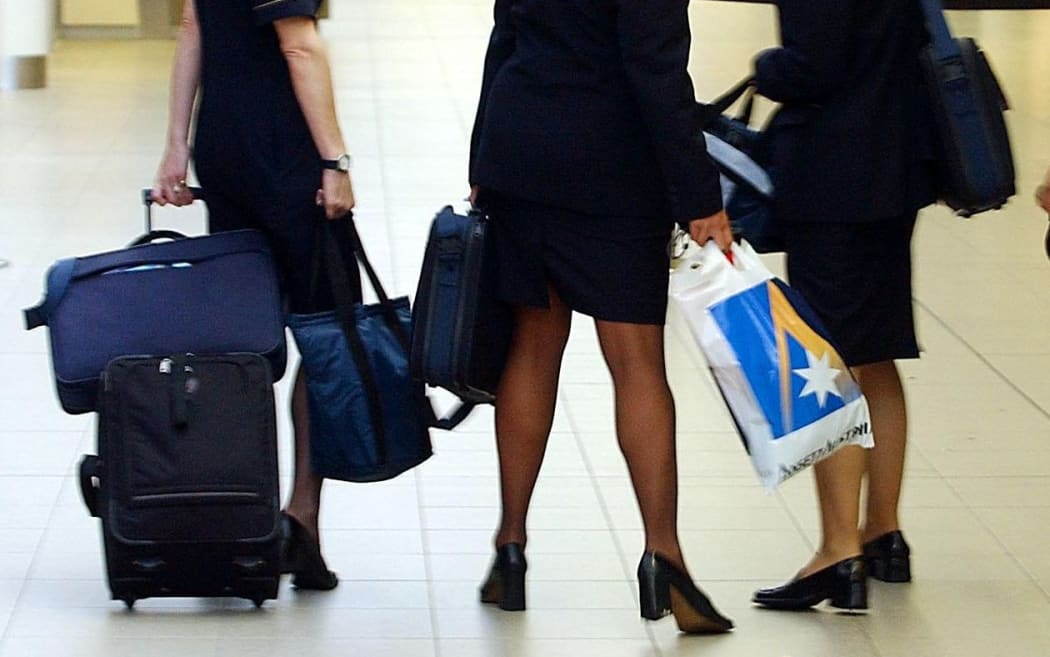Weight - not size - is seen as the real issue with carry-on luggage amid a push for airlines to adopt a standard size for cabin baggage.

Photo: AAP
The International Air Transport Association (IATA) wants its new standard set of measurements to be accepted across the industry.
At its annual meeting in Miami, IATA has come up with what it thinks is an answer for smoother boarding of planes and fewer fights with airline staff.
Vice president Thomas Windmuller said the proposed standard measurements of 55cm x 35cm x 20cm would mean faster turnarounds.
He said 30 to 40 airlines were interested, and a dozen had already stated they would accept the measurements.
IATA said airlines which have shown interest included Brazil's Azul, Germany's Lufthansa, Emirates, Qatar Airways, Cathay Pacific, and China Eastern.
Air New Zealand said in a statement that it was open to having talks with IATA, but it generally found its customers respected its rules around carry-on baggage.
The biggest cabin baggage allowed on Air New Zealand is 118cm - a total figure given by adding the height, width and depth of a bag. The size IATA is proposing is a total 110cm.
Weight a more hefty problem
Strachan Crang from the EPMU, which merged with the Flight Attendants and Related Services Association, said cabin workers were getting hurt from heavy carry-on luggage as they helped passengers.
"It's back strains, elbow strains, shoulder strains and those sorts of injuries.
"So lifting, twisting and lifting heavy weight over and above your head does cause injuries and accidents," he said.
Mr Crang said the union had told flight attendants within just the last couple of months that they should not hoist cabin baggage into overhead compartments themselves.
"There's some pretty horrendous bags that come on board an aircraft and what we're really worried about is the weight," he said.
Travel agents weigh in
House of Travel's commercial director Brent Thomas said the changes were designed to make it fair for all passengers.
"I think we've all seen that farcical stage where people are trying to stuff large suitcases into the overhead holds of the cabin."
But Mr Thomas also said baggage weight was a big problem, and many of the travel agency's customers had been caught out after hitting difficulties taking their luggage on a plane as carry-on.

Air New Zealand said it was open to having talks with IATA. Photo: RNZ / Alexander Robertson
He said different airlines had different rules for weight and this was confusing for customers.
"At the moment there's definitely confusion and people are arriving at the airport and have been told they have to check bags which they though they could take onto the plane.
"That's both an inconvenience and also sometimes quite costly," he said.
Mr Thomas said it would be "a big ask" to get the proposed standard across all airlines.
IATA worked with Boeing and Airbus to come up with a baggage size guaranteed to fit in bins on planes which had 120 seats or more.
Number of items also a problem
Voyager Group in Bay of Plenty imports cabin baggage from China and is one of New Zealand's largest suppliers of carry-on luggage.
Its managing director Lance Best said issues arose not from the size of luggage but from the extra baggage people took onto planes.
"You've got your carry-on bag, and then a lot of people take a handbag or a satchel, then they'll pick up duty-free and then they'll stuff a couple of jumpers in another bag and so forth.
"That's where the issues are coming from, it's not so much the actual carry-on size, it's the policing of the amount of bags you do carry on," he said.
Mr Best said the measurement changes would make a big difference to New Zealand travellers, even those who flew infrequently, if they were introduced here.
He said there were many cases currently that were IATA's desired depth of 20cm, but a standard set of dimensions would bring consistency.
"For consumers it's going to make life a lot easier, they know where they stand.
"But the big problem is going to come down to like I said the policing of the amount that people carry on as far as extra baggage goes," Mr Best said.

